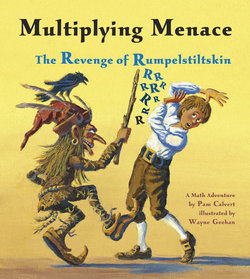Welcome to the "Deep in the Heart of Texas" blog hop! Over 40 Texas teacher bloggers have joined together to share what we love about our state as well as ideas and freebies that we love. You will also have the opportunity to enter to win TpT products and/or TpT gift certificates by entering using the rafflecopters included in each post. Down at the bottom, you will see all of the blogs participating in the hop. Just click and you will be taken to their posts. We hope you love what you find. Happy Valentine's Day!

I'm a native Texan. I have lived in Texas for my entire life-- and at this time, I never plan to leave! I grew up in Austin but went to K-12 school in Pflugerville ISD. After graduating from high school in 1998, I completed my undergraduate work at Baylor University in Waco. When I finished my Elementary Education teaching credentials at Baylor, I began teaching fourth grade in 2002 in Pflugerville ISD. Oddly enough, I ended up teaching with my fourth grade teacher-- yes, it was very odd. At the same time, I began working on my Masters degree in Curriculum and Instruction at the University of Texas at Austin.
In 2007, I began working on my Principal certification credentials at Concordia University in Austin. Upon finishing the program in 2008, I accepted an Assistant Principal position in Leander ISD. During the year, I decided that I really enjoyed the creative aspects of education more than the administrative side, so I returned to the classroom and began to focus on designing curriculum.
In 2012, I began working on my doctorate degree in Mathematics Education at Baylor University. This path has really given me an in-depth view of the world of math. This journey actually inspired me to begin creating products for teachers and blogging about mathematics teaching and learning.
While I have taught grades four, five, and seven over the years, I am currently a mentor teacher for first and second year teachers. This new position has given me the opportunity to support the learning of teachers early in their careers and gain knowledge in a variety of new areas, including early grades mathematics.
I absolutely love living in Austin! The great weather and eclectic feel of the city makes this a very unique place to be-- as confirmed by the many non-natives who move here each year. My favorite things about Austin include the weather, the lakes, the unique variety of cuisine, and the luscious parks and rolling hills of green.
An activity I love is a vocabulary strategy called Swat-It! This has been my class' favorite way to review vocabulary for years! It's a great way to get the students to learn important vocabulary words. It's both engaging and fun and all of the students want to volunteer to be a swatter.
Check out a sample Swat-it! board below!
Here's how to set it up:
1. Use an 8.5 inch x 11 inch size paper to program a 3 x 3 unit rectangle with 9 vocabulary words.
2. Project the rectangle onto your classroom whiteboard so that the students can reach all of the rectangles with a fly-swatter.
3. Ask for two volunteers to come to the front of the room and stand on the left and right side of the Swat-it! board.
4. Hand each student a fly-swatter.
5. Read a definition.
6. The students use the fly-swatter to swat the word that matches the definition.
7. The first student to swat the correct word is the winner.
Variations: Instead of vocabulary words, use numerical answers and read number sentences.
Note: I featured this activity in my "Engaging Mathematics" series last fall. Click the link to check it out!
One of my favorite freebies is my "Math Starters" pack. (Click the link to download the pack.) I shared it as part of my
"Math with Ms. Routt" series last month (click the link above to view the series). A math starter is a critical thinking activity that incorporates grade level content and skills. This pack includes three critical thinking activities that can be used to engage your students in the first few minutes of your math class. Be sure to check it out.
You can find other resources and freebies in my "
File Cabinet." (Click the link to view.) It's a work in progress, but I am continually working to add new resources. My critical thinking and problem solving freebies have been very popular! Happy Hunting!

































